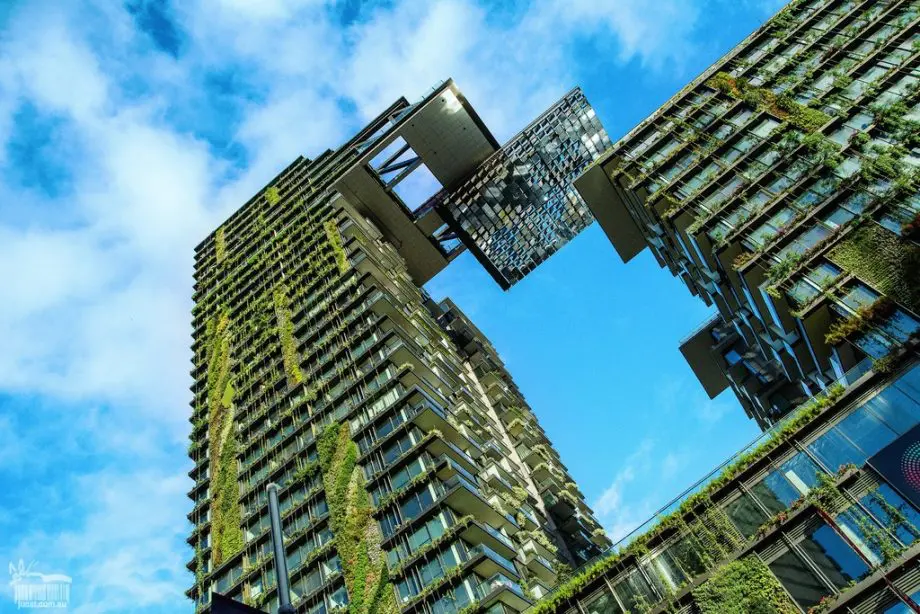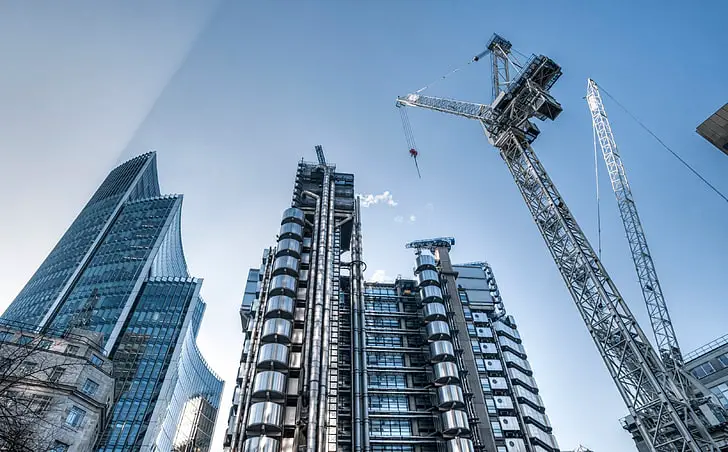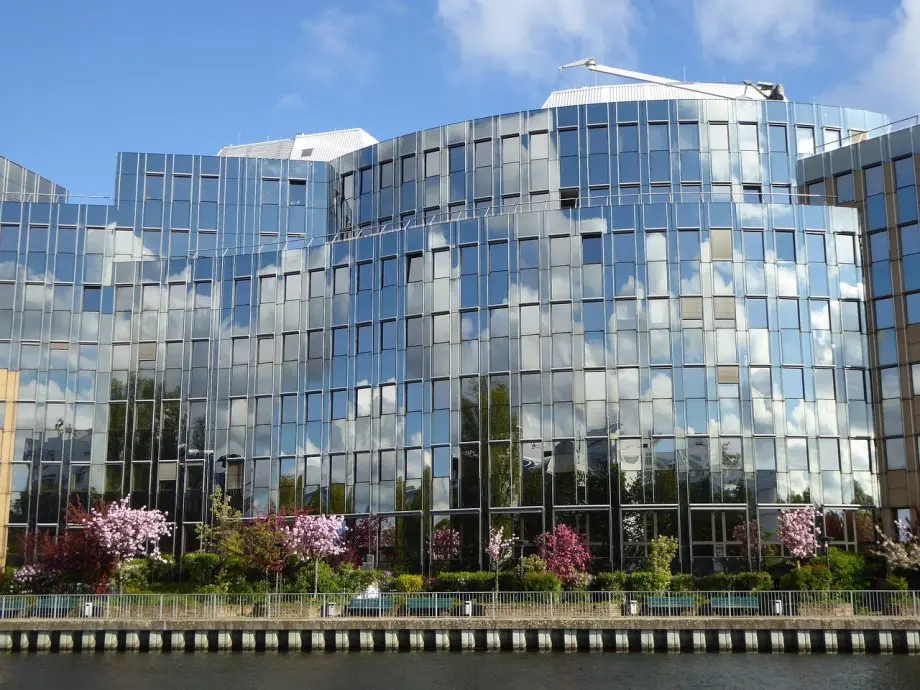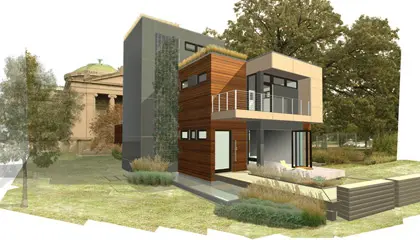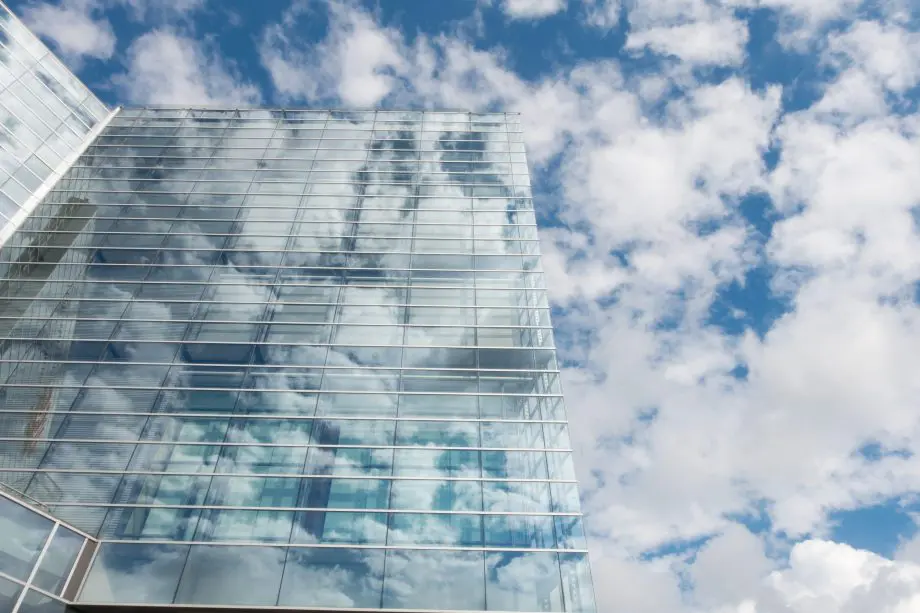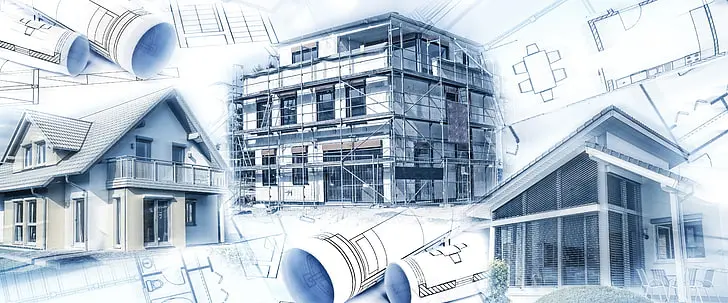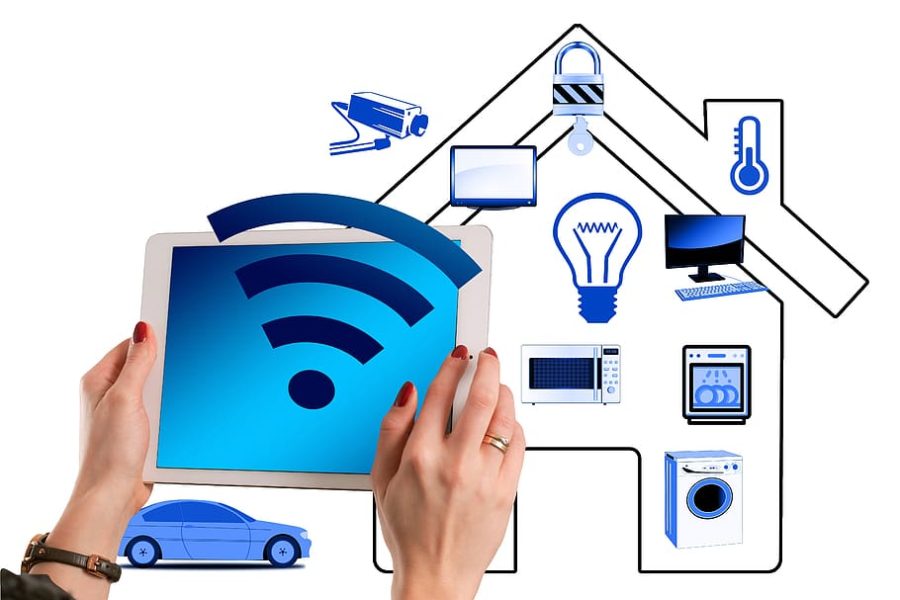
How do green buildings help the environment? Discover how green buildings impact the environment! We explore their benefits, strategies, and future trends.
Ever wondered how green buildings help the environment? Well, you’re in the right place!
In this blog post, we’re going to unravel the green mystery. We’ll explore the world of green buildings, their impact on our planet, and why they’re more than just a trend.
So, buckle up and get ready for an eco-friendly journey that could change the way you see the world around you!
How Do Green Buildings Help the Environment?

Have you ever paused to ponder do green buildings help the environment?
It’s a question that’s gaining importance as we strive for a more sustainable future.
In this enlightening blog post, we’re going to delve into the fascinating world of green buildings.
We’ll explore their environmental impact, the benefits they offer, the innovative strategies and technologies they employ, and even take a peek at some real-world examples.
We’ll also touch on the standards and certifications that guide their construction, and look ahead at what the future holds.
So, sit back, relax, and let’s embark on this green journey together!
Definition of Green Buildings
Let’s start at the beginning, shall we? Green buildings, as the name suggests, are all about being friendly to our planet.
But it’s not just about the color green, it’s about a holistic approach to construction that takes into account the entire lifecycle of a building.
From the planning and design stages, right through to construction, operation, and even maintenance, green buildings aim to minimize negative impacts on the environment.
They do this by maximizing the natural efficiencies of a building site and integrating them with renewable and low-carbon technologies.
It’s all about creating a healthy built environment that’s in harmony with nature.
Brief Overview of the Importance of Green Buildings
Now, you might be wondering, why all this fuss about green buildings?
Well, the importance of green buildings can’t be overstated.
Buildings and their supporting supply chains are responsible for a significant share of worldwide carbon dioxide emissions and energy, water, and materials consumption.
By focusing on green building practices, we can make significant, cost-effective improvements in these areas.
Plus, green buildings aren’t just good for the environment, they’re also great for the people who live and work in them.
They offer improved indoor air quality, and better temperature regulation, and can even contribute to improved human health. So, you see, green buildings are a win-win for everyone involved!
The Environmental Impact of Traditional Buildings
Alright, now that we’ve got a handle on what green buildings are and why they’re so important, let’s take a step back and look at the flip side of the coin of traditional buildings.
You see, while our homes and offices provide us with shelter and comfort, they also have a significant impact on our planet.
But don’t worry, this isn’t a doom and gloom story. It’s about understanding the challenges so that we can find better, greener solutions.
So, let’s dive in and explore the environmental impact of traditional buildings, shall we?
Energy Consumption
First up, let’s talk about energy consumption. Traditional buildings are often not designed with energy efficiency in mind.
This means they can use a lot of electricity for heating, cooling, lighting, and running appliances.
This energy is often generated from fossil fuels, which contributes to climate change.
It’s like running a marathon with a heavy backpack, it’s possible, but it’s far from efficient!
Water Usage
Next on our list is water usage. From flushing toilets to watering lawns, buildings use a lot of water.
In many traditional buildings, water is used once and then sent down the drain, which can lead to a lot of waste.
Plus, heating water for showers, washing machines, and dishwashers also use energy.
It’s a bit like pouring a liter of water into a glass, drinking a sip, and then throwing the rest away!
Waste Generation
Let’s move on to waste generation. The construction of traditional buildings can create a lot of waste, from unused materials to demolition debris.
Plus, once the building is in use, there’s daily waste from occupants to consider.
It’s like having a party and then throwing away all the decorations and leftover food the next day.
Greenhouse Gas Emissions
Last, but certainly not least, we have greenhouse gas emissions.
Traditional buildings contribute to these emissions in several ways, including through the energy they consume, the waste they produce, and the materials used in their construction.
It’s like driving a gas-guzzling car. It’ll get you where you need to go, but it’s not doing the planet any favors.
So, as you can see, traditional buildings can have quite an impact on our environment.
But don’t worry, this is where green buildings come in to save the day!
The Benefits of Green Buildings
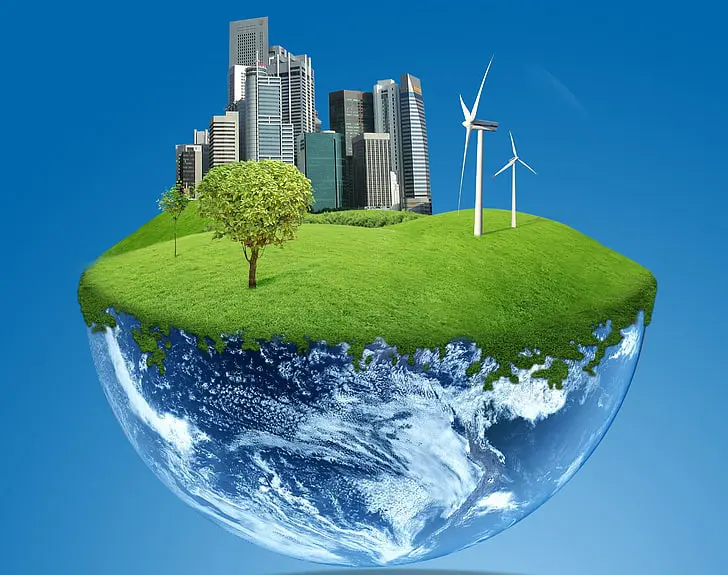
Now that we’ve explored the environmental impact of traditional buildings, it’s time to turn our attention to the heroes of our story green buildings.
These eco-friendly marvels are stepping up to the plate to tackle the challenges we’ve just discussed.
But they’re not just about reducing harm, they’re about creating positive benefits too.
From energy efficiency to improved air quality, green buildings are packed with features that are good for both the planet and the people who use them.
So, let’s roll up our sleeves and dive into the wonderful world of green building benefits!
Energy Efficiency
Let’s kick things off with energy efficiency. Green buildings are designed to use less energy without sacrificing comfort.
They do this through things like energy-efficient appliances, improved insulation, and smart design that takes advantage of natural light and heat.
It’s like swapping out your old, gas-guzzling car for a sleek, electric model. You’re still getting from A to B, but you’re using a lot less energy to do it!
Water Efficiency
Next up, we have water efficiency. Green buildings are all about making the most of every drop.
This can involve everything from installing low-flow fixtures and rainwater harvesting systems to using drought-resistant plants in landscaping.
It’s like having a superpower that lets you quench your thirst, keep clean, and water your garden, all while using less water!
Improved Indoor Air Quality
Now, let’s talk about air quality. Green buildings often have better ventilation and use materials that release fewer toxins, leading to cleaner indoor air.
This can be a big deal for people with allergies or respiratory issues, and it can also improve the health and well-being of everyone who uses the building.
It’s like stepping out of a smoky room and into a fresh, breezy meadow!
Waste Reduction
Moving on to waste reduction, green buildings aim to produce less waste during construction and throughout their lifespan.
This can involve using sustainable materials, designing for durability, and even incorporating recycling facilities.
It’s like having a magic wand that turns your trash into treasure!
Lowering Greenhouse Gas Emissions
Last but not least, green buildings help to lower greenhouse gas emissions.
By using less energy, water, and other resources, they reduce the demand for power plants and other infrastructure that often rely on burning fossil fuels.
Plus, many green buildings generate some or all of their own power from renewable sources, which further reduces their emissions.
It’s like planting a forest of trees that absorb carbon dioxide, instead of contributing to its accumulation in our atmosphere!
So, as you can see, the benefits of green buildings are pretty impressive. They’re not just good for the environment, they’re good for us too!
Green Building Strategies and Technologies
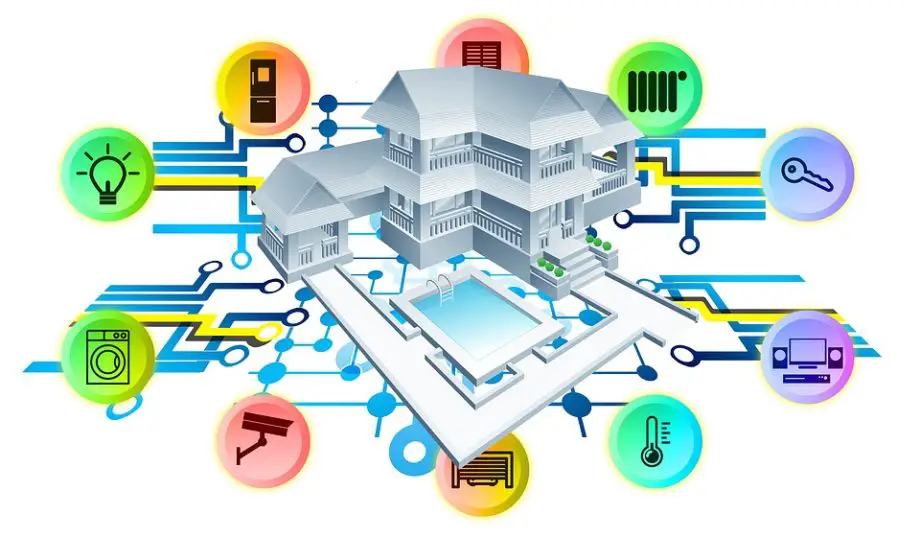
Having seen the benefits of green buildings, you might be wondering, ‘How do they do it?’
Well, it’s all thanks to a range of innovative strategies and technologies.
These are the tools in the green building toolkit, and they’re what makes these buildings so effective at reducing environmental impact and improving quality of life.
From energy-efficient appliances to sustainable building materials, there’s a lot to cover.
So, let’s dive in and explore some of the key strategies and technologies that make green buildings so green!
Energy-Efficient Appliances and Systems
First on our list are energy-efficient appliances and systems. These are the workhorses of a green building, helping to reduce energy consumption without sacrificing comfort or functionality.
Think of appliances like refrigerators, dishwashers, and washing machines that use less electricity, or heating and cooling systems that deliver the right temperature with minimal energy use.
It’s like having a team of superheroes, each with their own energy-saving superpower, working together to keep your building running smoothly and efficiently!
Water-Saving Fixtures and Water Management Systems
Next, we have water-saving fixtures and water management systems.
These technologies help to reduce water use in green buildings. This could be as simple as installing low-flow faucets and showerheads, or as complex as setting up a rainwater harvesting system to collect and use rainwater.
It’s like having a magic water bottle that never runs out, no matter how much you drink!
Use of Sustainable Building Materials
Moving on, we have the use of sustainable building materials. This involves choosing materials that are renewable, recycled, or have a low environmental impact.
For example, a green building might use reclaimed wood, recycled metal, or bricks made from fly ash.
It’s like building a house out of Lego blocks, where each block is made from eco-friendly materials!
Waste Management During Construction
Last but not least, we have waste management during construction.
This involves planning and implementing strategies to reduce, reuse, and recycle waste generated during the construction process.
It could involve everything from careful material ordering to reduce excess, to setting up recycling facilities on-site.
It’s like having a clean-up crew that follows you around as you build, making sure that nothing goes to waste!
As you can see, green building strategies and technologies are all about making the most of resources, reducing waste, and minimizing environmental impact.
It’s a holistic approach that considers every aspect of a building’s lifecycle.
Green Building Standards and Certification Systems
Now that we’ve explored the strategies and technologies behind green buildings, let’s take a look at the standards and certifications that guide their design and construction.
These systems are like the rulebooks for green buildings, providing clear criteria and benchmarks that buildings must meet to be considered ‘green’.
They’re an essential part of the green building landscape, helping to ensure consistency, credibility, and high performance.
So, let’s dive in and explore some of the key green building standards and certification systems!
LEED (Leadership in Energy and Environmental Design)
Let’s start with one of the most well-known green building certification systems – LEED, which stands for Leadership in Energy and Environmental Design.
Developed by the U.S. Green Building Council, LEED provides a framework for healthy, highly efficient, and cost-saving green buildings.
It’s like a report card for buildings, with different levels of certification awarded based on points earned across several categories, including sustainable sites, water efficiency, energy and atmosphere, materials and resources, and indoor environmental quality.
So, if a building is LEED certified, you know it’s made the grade when it comes to being green!
BREEAM (Building Research Establishment Environmental Assessment Method)
Next up, we have BREEAM, or the Building Research Establishment Environmental Assessment Method.
This is a UK-based certification that’s been around since 1990, making it one of the oldest green building certifications.
BREEAM assesses buildings on a range of factors, including energy, health and well-being, innovation, land use, materials, management, pollution, transport, waste, and water.
It’s like a comprehensive health check for a building, making sure it’s performing well across all aspects of sustainability.
Other Notable Certification Systems
While LEED and BREEAM are two of the most well-known green building certification systems, there are many others out there, each with its own focus and criteria.
For example, there’s the Living Building Challenge, which aims to create buildings that are self-sufficient and have a positive impact on their surroundings.
Or the Passive House standard, which focuses on energy efficiency and requires buildings to use very little energy for heating or cooling.
It’s like a buffet of green building certifications, with something to suit every type of building and sustainability goal!
Case Studies of Green Buildings
Having explored the what, why, and how of green buildings, it’s time to see them in action!
Case studies offer a real-world glimpse into the possibilities of green building, showcasing the innovative designs, strategies, and technologies we’ve discussed.
From residential homes to commercial skyscrapers, these examples highlight the practical application and tangible benefits of green building practices.
So, let’s embark on a virtual tour and explore some standout green buildings from around the world!
Case Study 1 Parkroyal on Pickering, Singapore
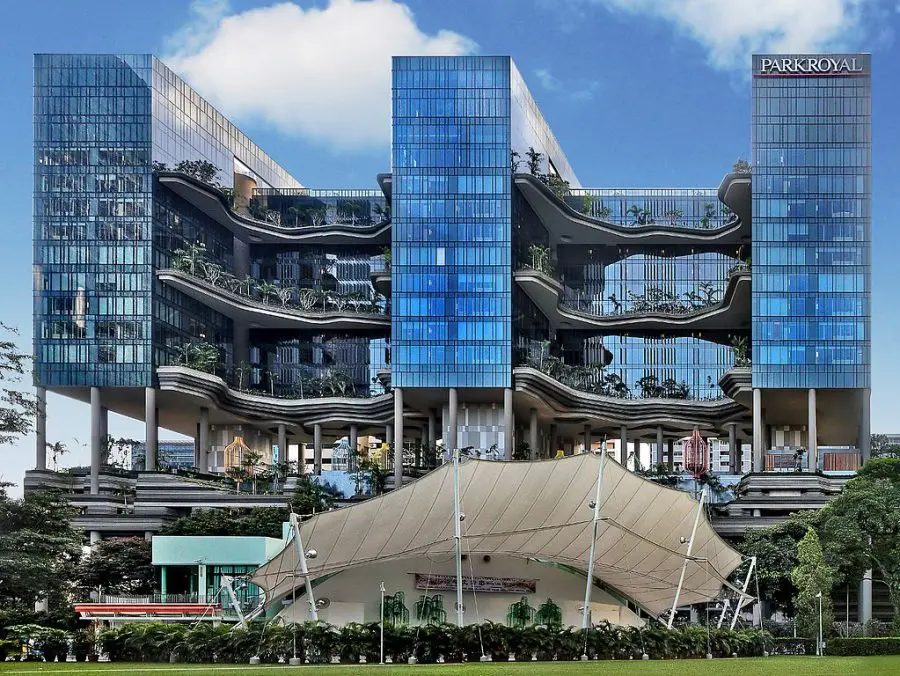
Let’s start our tour in Singapore with the iconic Parkroyal on Pickering.
This hotel and office building is a stunning example of a green building.
It features a unique design with sky gardens, water features, and over 15,000 square meters of greenery, more than twice its land area!
The building also uses rainwater harvesting, automatic sensors to regulate energy and water usage, and solar cells to generate renewable energy.
It’s like a lush garden oasis in the heart of the city, showing that urban development and nature can coexist beautifully.
Case Study 2 Vauban district in Freiburg Germany
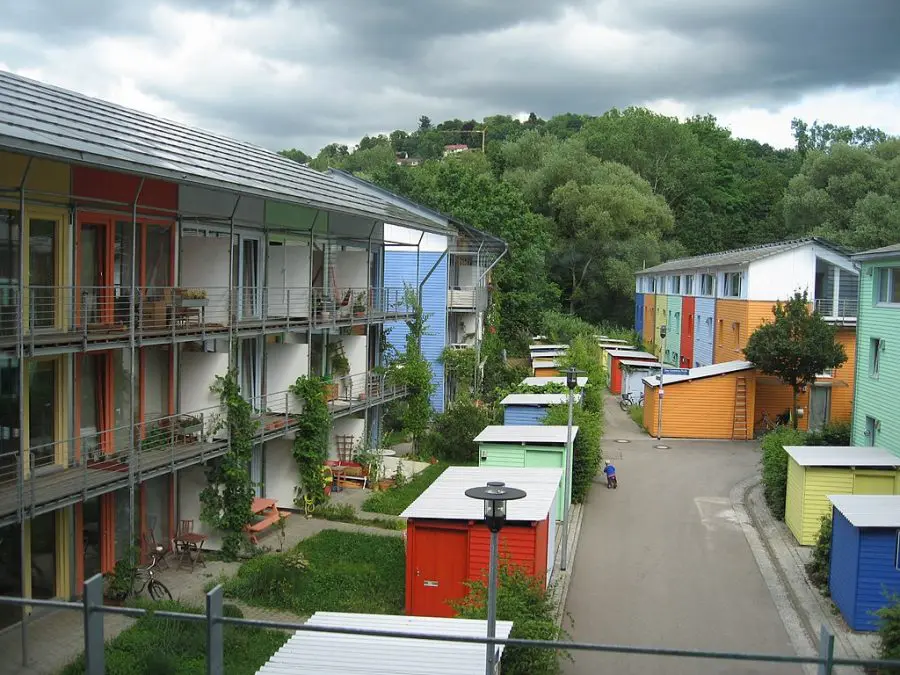
Next, we jet off to Germany to visit the Vauban district in Freiburg.
This residential area is a large-scale example of green building and sustainable living.
The district is designed to be car-free, with excellent public transport links and plenty of bike paths.
The houses are all built to low-energy specifications, with many achieving ‘passive house’ or even ‘plus-energy’ status, meaning they generate more energy than they consume.
It’s like stepping into the future, where sustainable living is the norm, not the exception.
Case Study 3 Bullitt Center Seattle

Finally, we head over to the United States to visit the Bullitt Center in Seattle.
Often referred to as the greenest commercial building in the world, the Bullitt Center is designed to have a 250-year lifespan and to be entirely self-sufficient.
It generates its own energy through a rooftop solar array, collects and uses rainwater, and processes its own waste.
It’s like a self-contained ecosystem, demonstrating that even commercial buildings can achieve the highest levels of sustainability.
These case studies show that green buildings are not just theoretical concepts, but practical, viable, and beneficial solutions that are already being implemented around the world.
They’re a testament to the creativity, innovation, and commitment of architects, engineers, and builders who are passionate about creating a more sustainable future.
The Future of Green Buildings
As we’ve seen, green buildings are already making a significant impact on our environment and our lives.
But what does the future hold? With advancements in technology and a growing awareness of the need for sustainability, the future of green buildings is looking brighter than ever.
From new materials and design techniques to policy changes and public demand, there are many factors shaping the future of this field.
So, let’s gaze into the crystal ball and explore what’s on the horizon for green buildings!
Trends and Innovations in Green Building Technology
Looking ahead, we can expect to see a host of exciting trends and innovations in green building technology.
For starters, we’re likely to see even more emphasis on energy efficiency, with advancements in insulation, window technology, and HVAC systems.
Renewable energy is also set to play a bigger role, with solar panels becoming more efficient and affordable, and new technologies like solar glass gaining traction.
Another trend to watch is the rise of smart buildings.
These buildings use internet-connected devices to monitor and control building operations, from lighting and temperature to security and maintenance.
This not only improves efficiency but also enhances comfort and convenience for occupants.
And let’s not forget about green building materials. From recycled materials to bio-based alternatives, the future will bring a wider range of sustainable options for builders to choose from.
We might even see buildings made from living materials, like self-healing concrete or bricks grown from bacteria!
The Role of Green Buildings in Sustainable Development
As for the role of green buildings in sustainable development, it’s set to be a big one.
Buildings account for a significant portion of global energy use and greenhouse gas emissions, so making them more sustainable is crucial for tackling climate change.
But green buildings don’t just help the environment – they also contribute to social and economic sustainability.
On the social side, green buildings can improve health and well-being by providing better air quality, more natural light, and a more comfortable living and working environment.
They can also help to create more sustainable communities, especially when they’re part of broader initiatives like eco-districts or green cities.
On the economic side, green buildings can reduce costs for owners and occupants through energy and water savings.
They can also drive economic growth by creating jobs in green construction, design, and maintenance.
In short, green buildings are a key piece of the puzzle for sustainable development.
They offer a way to balance our need for development with the need to protect our planet and improve the quality of life for all.
Green Buildings Impact on the Environment FAQs

Throughout our exploration of green buildings, you might have found yourself with a few questions. And you’re not alone!
Many people have queries when it comes to this topic. That’s why we’ve compiled a list of frequently asked questions about green buildings.
From their impact on climate change to the benefits they offer, we’ll tackle some of the most common questions people have.
So, let’s dive into the FAQs and clear up any lingering curiosities you might have about green buildings!
Q: How do green buildings reduce climate change?
A: Green buildings play a significant role in mitigating climate change. They are designed to be energy-efficient, reducing the amount of fossil fuels needed for heating, cooling, and electricity.
Many green buildings also incorporate renewable energy sources like solar or wind power, further reducing their carbon footprint.
Additionally, green buildings often use materials and construction methods that are more sustainable, resulting in fewer emissions during the building process.
Q: How do green buildings reduce waste?
A: Green buildings reduce waste in several ways.
During construction, they often use materials more efficiently and incorporate recycled or repurposed materials, reducing waste from the start.
Once built, green buildings are designed to be more efficient, reducing waste from energy and water use.
Many also incorporate systems for managing waste, like composting or recycling facilities, making it easier for occupants to reduce their own waste.
Q: How do buildings impact the environment?
A: Traditional buildings can have a significant impact on the environment.
They often use a lot of energy for heating, cooling, and electricity, much of which comes from burning fossil fuels.
This contributes to air pollution and climate change. Buildings also use a lot of water and can generate a lot of waste, from construction debris to the waste generated by the people who live or work in them.
However, green buildings are designed to minimize these impacts and can even have positive effects on the environment.
Q: What are the benefits of green building to the environment?
A: Green buildings offer numerous benefits to the environment.
They reduce energy use, lowering greenhouse gas emissions and helping to mitigate climate change.
They use water more efficiently, helping to conserve this precious resource.
Green buildings also reduce waste, both during construction and during their operation.
Plus, many green buildings incorporate features that benefit the local environment, like green roofs that provide habitat for wildlife or rain gardens that help manage stormwater.
How Green Buildings Impact the Environment Conclusion
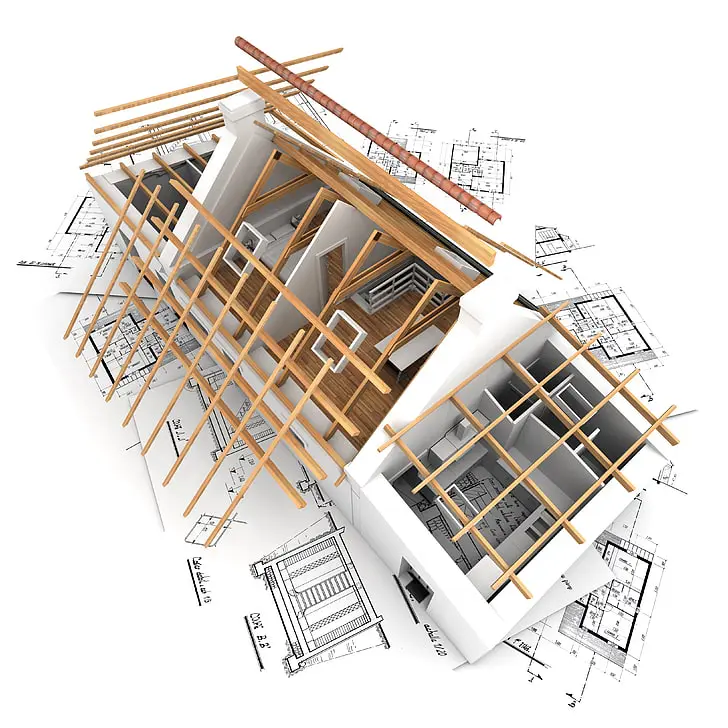
As we wrap up our deep dive into the world of green buildings, it’s clear that this isn’t just a passing trend.
Green buildings are a crucial part of our journey towards a more sustainable future.
They offer practical solutions to some of our most pressing environmental challenges, from climate change to resource conservation.
But before we close the curtain on this topic, let’s take a moment to reflect on what we’ve learned and consider the exciting potential that lies ahead in the realm of green buildings.
Recap of the Importance and Benefits of Green Buildings
Green buildings, as we’ve seen, are much more than just a buzzword in the world of architecture and construction.
They represent a significant shift in how we think about and interact with the built environment.
Green buildings prioritize sustainability, not just in their construction, but throughout their entire lifecycle.
They’re designed to be energy-efficient, reducing our reliance on fossil fuels and helping to combat climate change.
They use water wisely, contribute to waste reduction, and often incorporate renewable energy sources.
But the benefits of green buildings extend beyond the environment.
They also offer economic advantages, such as lower operating costs and higher property values.
Plus, they create healthier, more comfortable spaces for people to live and work in, contributing to improved well-being and productivity.
In essence, green buildings are a win-win-win: for the environment, for the economy, and for people.
Final Thoughts on the Future of Green Buildings
Looking ahead, the future of green buildings is bright. As technology continues to advance, we can expect to see even more innovative and effective green building strategies and technologies.
From smart buildings that automate energy-saving measures to new, sustainable building materials, the possibilities are exciting.
At the same time, the growing recognition of the importance of sustainability is driving increased demand for green buildings.
More and more, people are seeking out green buildings, whether it’s for their homes, their workplaces, or the places they shop and socialize.
And as this demand grows, so too will the commitment to green building among architects, builders, and policymakers.
In conclusion, green buildings are more than just a trend. They’re a crucial part of our path toward a more sustainable and resilient future.
And as we continue to learn, innovate, and build, that future is looking brighter every day.

